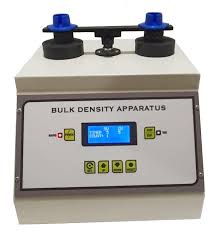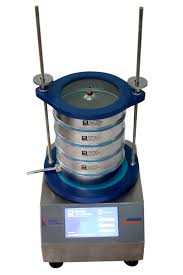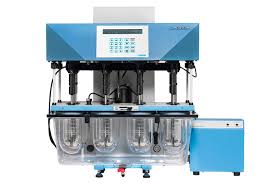|
Getting your Trinity Audio player ready... |
Bursting Strength Testers: Essential Instruments for Material Evaluation in Packaging Industry
Bursting Strength Testers: In the packaging and manufacturing industries, quality control is a fundamental part of ensuring that products are durable and able to withstand the challenges of transportation and handling. Among the various tests used to assess the reliability and strength of materials, the Bursting Strength Tester is a vital tool. This instrument is widely used to evaluate the bursting strength of different materials, including paper, cardboard, textiles, non-woven fabrics, and other sheet materials. It helps manufacturers understand the material’s resistance to rupture or bursting under pressure, providing crucial insights into its ability to perform under stress.
Purpose and Significance of Bursting Strength Testers
A Bursting Strength Tester is designed to measure the maximum amount of pressure a material can endure before it ruptures or bursts. This test is particularly important in industries that deal with packaging, such as the paper and textile sectors, where the integrity and durability of packaging materials are critical for protecting the contents during storage and transport.
The test involves applying uniform hydraulic pressure to a sample of the material using a rubber diaphragm until it bursts. The force required to cause the rupture is measured, and this value is referred to as the bursting strength of the material. The results from this test are crucial in determining the material’s quality and its ability to withstand various forces without compromising its structural integrity.
How Bursting Strength Testers Work
The basic operation of a Bursting Strength Tester is simple yet effective. The machine typically uses hydraulic or pneumatic pressure to apply a controlled force to a confined area of the material until it ruptures. The pressure applied is uniformly distributed across the material, and the force required to cause the rupture is recorded. This force is then used to calculate the bursting strength, which is usually measured in pounds per square inch (psi) or kilopascals (kPa).
Key Features of Bursting Strength Testers
The design and functionality of Bursting Strength Testers can vary, but they generally share several key features that contribute to their accuracy and reliability in measuring the material’s strength.
- Pressure Application Mechanism: Bursting Strength Testers typically use a rubber diaphragm or hydraulic system to apply uniform pressure to the sample. The diaphragm deforms under pressure, gradually applying force to the material until it bursts.
- Pressure Measurement: The force required to rupture the material is precisely measured, providing a numerical value that indicates the material’s bursting strength. This value is crucial for assessing the material’s quality.
- Sample Size: The size of the sample tested is an essential factor. The tester requires a standard sample size to ensure consistency and comparability of results across different materials and tests.
- Test Settings and Controls: Many testers come with adjustable settings that allow users to control the rate at which pressure is applied. This flexibility helps ensure that results are consistent and suitable for different types of materials.
Types of Bursting Strength Testers
Several types of Bursting Strength Testers are commonly used in the industry, each employing different mechanisms to apply pressure to the sample. The two most widely used types include:
- Diaphragm Burst Tester: This is the most common type of Bursting Strength Tester. It uses a rubber diaphragm to apply uniform pressure to the material until it bursts. The pressure applied is measured, and the point of rupture is recorded.
- Concentric Ring Burst Tester: This type uses a hydraulic system with concentric rings to apply pressure. The uniformity of the pressure distribution ensures that the material is tested under consistent conditions.
Applications of Bursting Strength Testers
Bursting Strength Testers are used in various industries to test materials such as paper, textiles, plastics, non-woven fabrics, and cardboard. These materials are commonly used in the packaging industry, where their ability to withstand physical stress is of utmost importance. The test helps manufacturers determine whether their materials can withstand the conditions they will be subjected to during handling, transport, and storage.
- Paper and Paperboard: In the paper industry, the strength of paper and cardboard is critical for ensuring that the products can carry weight and endure rough handling without tearing or collapsing. Bursting Strength Testers help manufacturers ensure that their products meet the required standards for durability.
- Textiles and Non-Woven Fabrics: For textile manufacturers, the ability of fabrics to resist rupture under pressure is crucial, especially in applications such as packaging and protective clothing. Bursting strength tests are conducted to assess the fabric’s durability.
- Plastic Materials: Plastics used in packaging, especially in industries such as food and pharmaceuticals, must be able to withstand pressure and rough handling. Bursting Strength Testers are employed to test the integrity of plastic films and sheets used in packaging.
Standardization of Bursting Strength Testing
For accurate and consistent results, bursting strength testing must adhere to standardized procedures. Various international organizations, including ASTM International and the International Organization for Standardization (ISO), have established testing guidelines to ensure that tests are carried out uniformly across different laboratories and industries. These standards ensure that materials tested under different conditions will produce comparable results, helping manufacturers make informed decisions about their products.
Commonly referred to as ASTM D774 or ISO 2758, these standards provide detailed procedures for sample preparation, test equipment calibration, and reporting of results. By adhering to these standards, manufacturers can ensure that their products meet regulatory requirements and customer expectations.
Benefits of Bursting Strength Testing in Quality Control
The Bursting Strength Test plays a crucial role in the quality control processes of packaging material manufacturers. By regularly testing the bursting strength of materials, manufacturers can:
- Ensure Material Durability: Consistently testing materials for bursting strength ensures that they can withstand the rigors of transportation and handling, thus ensuring that the products inside remain protected.
- Minimize Defects: By identifying weak materials that are prone to rupturing, manufacturers can eliminate defects early in the production process, reducing the risk of costly errors.
- Meet Industry Standards: Bursting strength testing helps manufacturers meet industry standards for packaging materials, ensuring compliance with regulations and customer requirements.
- Enhance Customer Satisfaction: Packaging that maintains its integrity throughout shipping and handling helps enhance customer satisfaction by ensuring that products arrive in perfect condition.
Measurement Units for Bursting Strength
Bursting strength is typically measured in pressure units such as pounds per square inch (psi) or kilopascals (kPa), depending on the specific testing standards and regional preferences. The measurement can also be expressed in terms of the force required to rupture a specified area of the material, which provides a clear indication of the material’s resistance to rupture.
Importance in Packaging Design
In packaging design, understanding the bursting strength of materials is essential to creating packaging solutions that are both functional and cost-effective. Materials with high bursting strength can ensure that the packaging will not fail under pressure, which is crucial when transporting heavy or fragile items.
Manufacturers must consider bursting strength when designing packaging for products that will be subjected to extreme handling, such as during shipment or when stacked with other items. Properly tested packaging materials can prevent damage to the product and avoid potential losses for businesses and customers.
Conclusion
In summary, Bursting Strength Testers are indispensable tools in the packaging industry, helping manufacturers assess the strength and durability of various materials used for packaging. By applying controlled pressure to materials like paper, cardboard, textiles, and plastics, these devices provide valuable data that can be used to ensure that materials meet quality standards and can withstand the pressures of transportation and handling. Standardized testing methods and the implementation of bursting strength testing in quality control processes help improve the reliability of packaging materials, ultimately contributing to the overall performance and protection of packaged products.
The following table summarizes the key types of Bursting Strength Testers, their mechanisms, and the materials typically tested:
| Type of Bursting Strength Tester | Mechanism | Materials Tested |
| Diaphragm Burst Tester | Uses a rubber diaphragm to apply uniform pressure until the material bursts | Paper, paperboard, textiles, plastics |
| Concentric Ring Burst Tester | Employs a hydraulic system with concentric rings to apply uniform pressure | Cardboard, non-woven fabrics, textiles |
By conducting bursting strength tests, manufacturers can ensure their materials meet industry standards, reduce the risk of product damage, and enhance customer satisfaction through the delivery of high-quality, durable packaging solutions.















